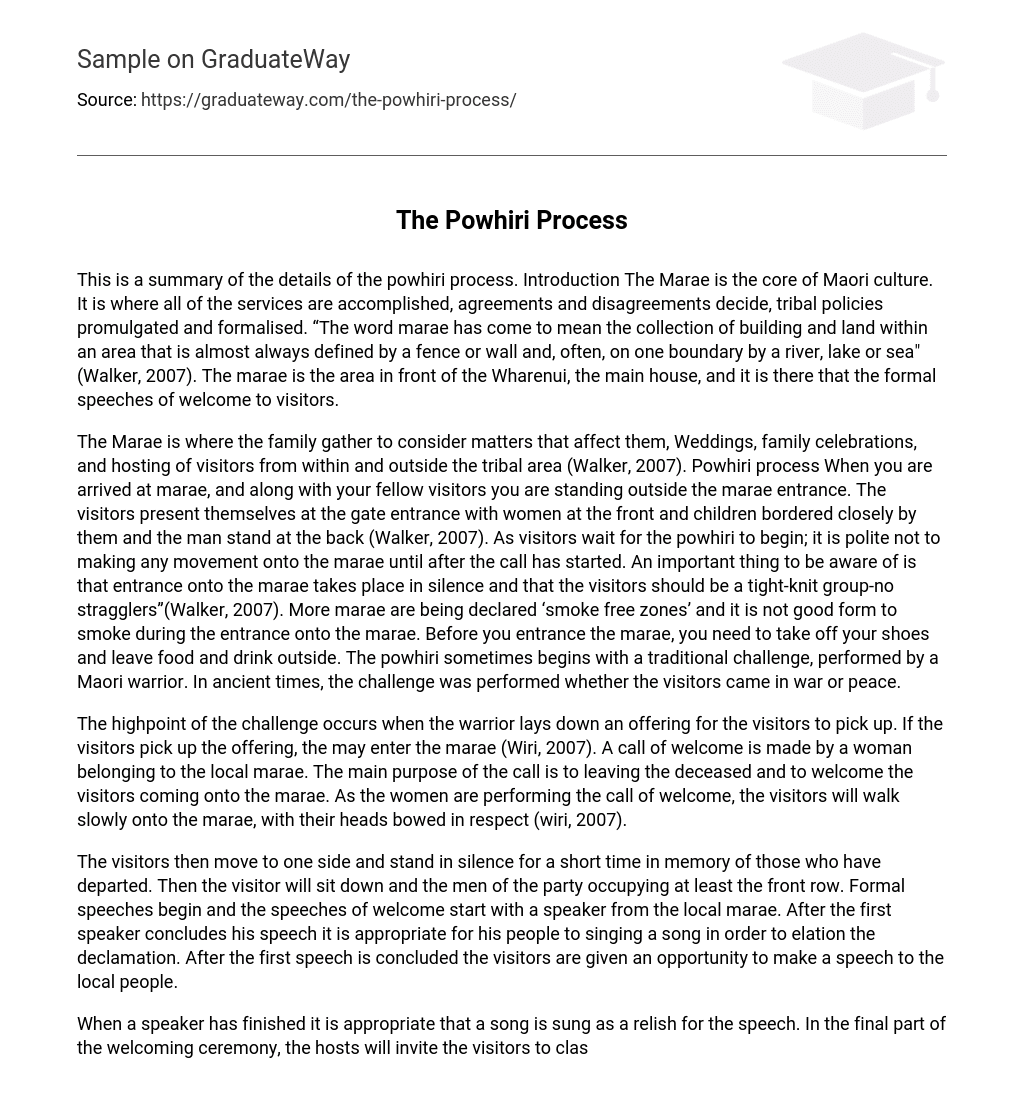This is a summary of the details of the powhiri process. Introduction The Marae is the core of Maori culture. It is where all of the services are accomplished, agreements and disagreements decide, tribal policies promulgated and formalised. “The word marae has come to mean the collection of building and land within an area that is almost always defined by a fence or wall and, often, on one boundary by a river, lake or sea” (Walker, 2007). The marae is the area in front of the Wharenui, the main house, and it is there that the formal speeches of welcome to visitors.
The Marae is where the family gather to consider matters that affect them, Weddings, family celebrations, and hosting of visitors from within and outside the tribal area (Walker, 2007). Powhiri process When you are arrived at marae, and along with your fellow visitors you are standing outside the marae entrance. The visitors present themselves at the gate entrance with women at the front and children bordered closely by them and the man stand at the back (Walker, 2007). As visitors wait for the powhiri to begin; it is polite not to making any movement onto the marae until after the call has started. An important thing to be aware of is that entrance onto the marae takes place in silence and that the visitors should be a tight-knit group-no stragglers”(Walker, 2007). More marae are being declared ‘smoke free zones’ and it is not good form to smoke during the entrance onto the marae. Before you entrance the marae, you need to take off your shoes and leave food and drink outside. The powhiri sometimes begins with a traditional challenge, performed by a Maori warrior. In ancient times, the challenge was performed whether the visitors came in war or peace.
The highpoint of the challenge occurs when the warrior lays down an offering for the visitors to pick up. If the visitors pick up the offering, the may enter the marae (Wiri, 2007). A call of welcome is made by a woman belonging to the local marae. The main purpose of the call is to leaving the deceased and to welcome the visitors coming onto the marae. As the women are performing the call of welcome, the visitors will walk slowly onto the marae, with their heads bowed in respect (wiri, 2007).
The visitors then move to one side and stand in silence for a short time in memory of those who have departed. Then the visitor will sit down and the men of the party occupying at least the front row. Formal speeches begin and the speeches of welcome start with a speaker from the local marae. After the first speaker concludes his speech it is appropriate for his people to singing a song in order to elation the declamation. After the first speech is concluded the visitors are given an opportunity to make a speech to the local people.
When a speaker has finished it is appropriate that a song is sung as a relish for the speech. In the final part of the welcoming ceremony, the hosts will invite the visitors to clasp hands and press noses with them. This completes the entire welcoming ceremony. The visitors are then called to go and have a meal. (Wiri,2007) The song to be singing Ta Aroha(love) Ta Whakapone(Believe;Faith) Te Rangimarie (Happy;Goodwill) There are some of pictures to showing the Marae and Powhiri process.





